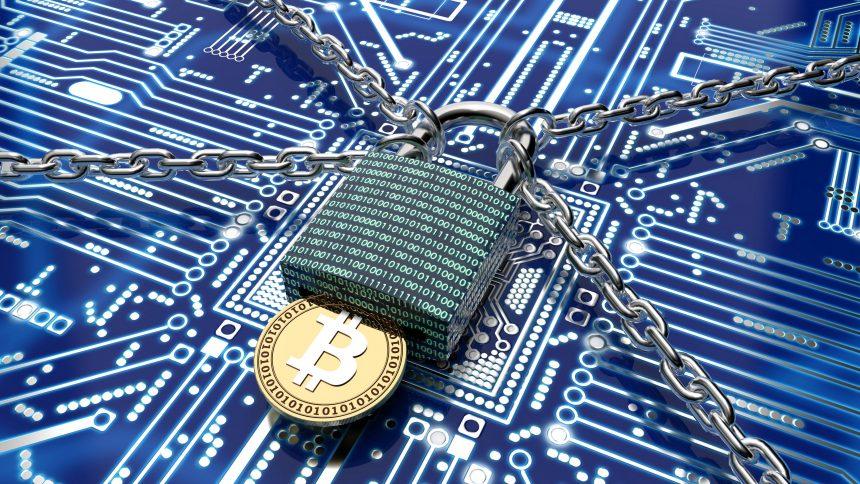Ransomware is a formidable form of malware that has increasingly become a significant concern for individuals and organizations alike. This type of malicious software encrypts files on a victim’s computer, rendering them inaccessible until a ransom is paid to the attacker. Among the various strains of ransomware, the ElonMuskIsGreedy ransomware has emerged as a notable threat, exploiting unsuspecting users and demanding payment for the decryption of their files.
The ElonMuskIsGreedy Ransomware Threat
The ElonMuskIsGreedy ransomware primarily infiltrates systems through deceptive tactics such as phishing emails, malicious software downloads, or vulnerabilities in outdated software. Once a user inadvertently installs the ransomware, it begins its malicious activities, primarily focusing on encrypting files. This strain targets a variety of file types, including documents, images, and other essential files, often using a specific file extension like .ELONMUSK to signify that the files have been encrypted.
Upon installation, the ransomware conducts a thorough scan of the system, identifying and encrypting files while simultaneously ensuring that the original files remain hidden or deleted. Users will notice that they can no longer access their files, and the ransom note will typically appear on their screens shortly after the encryption process is complete. This note outlines the steps victims must take to regain access to their files, often demanding payment in cryptocurrency to maintain the attacker’s anonymity.
The consequences of this ransomware’s presence are dire. Victims face the loss of critical data, potential financial loss from paying the ransom, and the uncertainty of whether their data will be restored even after payment. Moreover, organizations may suffer reputational damage and operational downtime, leading to further financial implications.
The Ransom Note
The ransom note left by the ElonMuskIsGreedy ransomware is designed to instill fear and urgency in the victim. It typically includes a message stating that the victim’s files have been encrypted and provides instructions for payment, often emphasizing that failure to comply within a certain timeframe will result in permanent file loss. This note may also include threats, such as public exposure of sensitive data if the ransom is not paid.
Purpose and Infiltration Methods
The primary purpose of ransomware like ElonMuskIsGreedy is financial gain. Attackers leverage the victim’s fear of losing access to their important files to coerce them into paying a ransom. Generally, this type of malware infiltrates systems through:
- Phishing Emails: Users are tricked into opening malicious attachments or clicking on links that lead to the download of ransomware.
- Malicious Downloads: Downloading software or files from untrusted sources can inadvertently introduce ransomware into the system.
- Vulnerabilities in Software: Outdated software with security flaws can be exploited to install ransomware without user consent.
The threat posed by ElonMuskIsGreedy ransomware extends beyond immediate financial loss; it can compromise personal and organizational data security, leading to breaches of sensitive information.
Symptoms of Infections
Identifying the presence of the ElonMuskIsGreedy ransomware is crucial for timely intervention. Common symptoms include:
- Inability to access files, often accompanied by an unusual file extension.
- A ransom note appearing on the screen.
- Unusual system behavior, such as slow performance or frequent crashes.
- New, unknown processes running in the background.
Detection Names
Users suspecting the presence of ElonMuskIsGreedy ransomware can look for the following detection names:
- Ransom.Win32.ElonMuskIsGreedy
- Trojan.Ransomware.ElonMuskIsGreedy
- Win32/ElonMuskIsGreedy
Similar Threats
Other ransomware variants users may encounter include:
- LockBit Ransomware: Known for its fast encryption speeds and targeting large organizations.
- Ragnarok Ransomware: Often spreads through phishing campaigns and demands ransoms in Bitcoin.
- Conti Ransomware: A more sophisticated variant that often employs double extortion tactics.
Comprehensive Removal Guide
If you suspect that your computer is infected with ElonMuskIsGreedy ransomware, follow these detailed steps to remove it:
- Disconnect from the Internet: To prevent the ransomware from communicating with its command server or spreading to other devices, disconnect your computer from the internet immediately.
- Boot into Safe Mode:
- Restart your computer.
- As it starts, press F8 (or Shift + F8) to access the boot menu.
- Select Safe Mode with Networking.
- Delete Suspicious Files:
- Open the Task Manager by pressing
Ctrl + Shift + Esc. - Look for any suspicious processes related to the ransomware and end them.
- Navigate to the folders where the ransomware files may reside (often found in the AppData or Temp folders) and delete them.
- Open the Task Manager by pressing
- Use Anti-Malware Software:
- Download a reputable anti-malware tool like SpyHunter.
- Install the software and run a full system scan to detect and remove ransomware and any associated malware.
- Follow the software’s prompts to quarantine or delete the detected threats.
- Restore Encrypted Files (if backups are available):
- Check for any backups on external drives or cloud storage.
- Use system restore points if available to revert the system to a pre-infection state.
- Update Your Security Software: Ensure your antivirus and anti-malware software is up to date to protect against future threats.
Preventing Future Infections
To safeguard your system against ransomware attacks like ElonMuskIsGreedy, consider the following preventive measures:
- Regular Backups: Always back up your files regularly to an external drive or cloud storage.
- Keep Software Updated: Ensure that your operating system, software applications, and security tools are regularly updated to patch vulnerabilities.
- Be Wary of Email Attachments: Avoid opening attachments or clicking on links in unsolicited emails.
- Use Comprehensive Security Solutions: Install and maintain reputable antivirus and anti-malware software to detect and eliminate threats.
Conclusion
Ransomware like ElonMuskIsGreedy poses significant threats to individuals and organizations, demanding urgent action upon detection. By following the outlined removal guide and adopting preventive measures, users can mitigate risks and protect their systems from these malicious threats. To enhance your computer’s security, consider downloading SpyHunter and scan your computer for free to ensure you remain safe from ransomware and other malware.
Text of the Ransom Note
Hi!
Have a troubles?
Your personal ID: –
We will solve your problem but you need to pay to get your files back
I will show you all possible proofs before payment
Attention!
Do not rename encrypted files.
Do not try to decrypt your data using third party software – it may cause permanent data loss.
We are always ready to cooperate and find the best way to solve your problem.
If you write in 24h you will have a good discount
Write us
1)Session Private Messenger
You can download it to chat with us
On your server,pc or laptop – getsession.org/download
Install it and press PLUS
Write new message
Put there my SESSION ID
0568a6df0e0cecd44aee201a1c3c871be786013afa00bae1ed00b704d98d2a9215
Also you can install this messenger on your phone
SESSION at GOOGLE PLAY/APPSTORE
Install it and add me 0568a6df0e0cecd44aee201a1c3c871be786013afa00bae1ed00b704d98d2a9215
2) TOX messenger (fast and anonymous)
hxxps://tox.chat/download.html
Install qtox
Press sign up
Create your own name
Press plus
Put there our tox ID:
E9164A982410EFAEBC451C1D5629A2CBB75DBB6BCDBD6D2BA94F4D0A7B0B616F911496E469FB
And add me/write message
3)Jami messenger (Fastest and anonymous)
hxxps://jami.net/
Also you can find it on your phone at google play/app store
Install it on your server,phone or tablet
Press sign up and do your own nickname
And add me/write message – Decryptionguy (use search)
If you are still having trouble, consider contacting remote technical support options.





